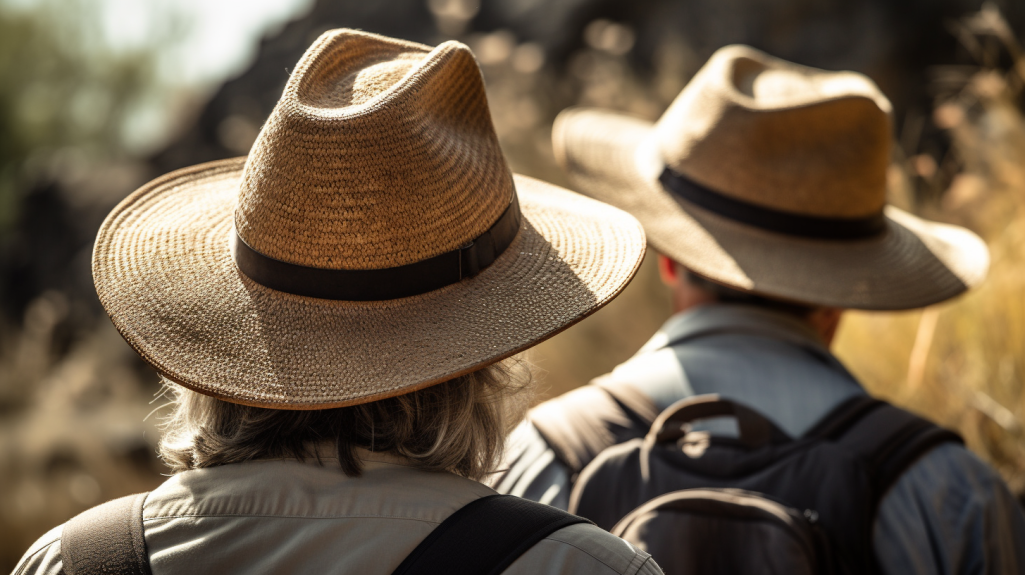Backpacking trips into the great outdoors offer adventure, stunning landscapes, and a break from the hustle and bustle of everyday life. However, one often underestimated aspect of these trips is sun over-exposure. Prolonged exposure to the sun’s harmful UV rays can lead to sunburn, heat-related illnesses, and even long-term skin damage. To ensure a safe and enjoyable backpacking experience, it’s crucial to take measures to protect yourself from the sun. In this article, we’ll explore strategies to help you avoid sun over-exposure on long backpacking trips.
- Choose the Right Clothing: The first line of defense against the sun is the clothing you wear. Opt for lightweight, long-sleeved shirts and pants made from UV-protective fabric. Wide-brimmed hats that shade your face, neck, and ears are also essential. Consider investing in clothing with a high UPF (Ultraviolet Protection Factor) rating, which indicates the level of UV protection it provides.
- Sunscreen is Your Friend: Sunscreen is a backpacker’s best friend. Choose a broad-spectrum sunscreen with an SPF (Sun Protection Factor) of at least 30. Apply it generously to all exposed skin, even on cloudy days. Don’t forget to reapply every two hours and after swimming or sweating. Travel-sized sunscreen bottles are convenient for backpacking trips.
- Timing is Key: Plan your hiking schedule to avoid the peak hours of sun exposure, typically from 10 a.m. to 4 p.m. This allows you to take advantage of the cooler morning and late afternoon hours while reducing the risk of sunburn.
- Seek Shade: Whenever possible, take breaks in shaded areas. Resting under the canopy of trees or using a lightweight portable sunshade can help you cool down and reduce sun exposure.
- Stay Hydrated: Staying hydrated is crucial to maintaining your body’s ability to regulate temperature. Dehydration can make you more susceptible to heat-related illnesses. Drink water regularly, even if you don’t feel thirsty, and consider using a hydration pack to make water readily accessible.
- Protect Your Eyes: Don’t forget to shield your eyes from harmful UV rays. Wear sunglasses with UV protection to prevent eye damage and reduce glare, especially in high-altitude environments.
- Use Lip Balm with SPF: Lips are often overlooked but can easily become sunburned. Use lip balm with SPF protection to keep your lips safe from the sun.
- Stay Informed About Weather Conditions: Keep an eye on the weather forecast for your backpacking destination. Knowing the expected conditions can help you plan your trip and prepare accordingly. In case of extreme heat or UV levels, consider postponing or adjusting your plans.
- Consider Reflective Gear: Some outdoor clothing and gear come with reflective coatings or materials that can further reduce sun exposure. These can be especially helpful in highly reflective environments like snow-covered terrain.
- Educate Yourself About Your Destination: Different environments have varying levels of sun exposure. Deserts, high-altitude regions, and bodies of water can intensify UV radiation. Research the specific challenges posed by your destination and plan accordingly.
Conclusion
While backpacking in the great outdoors is a fantastic way to connect with nature and embark on exciting adventures, it’s vital to prioritize your health and safety. Sun over-exposure can lead to a range of health issues, from sunburn to heat-related illnesses and long-term skin damage. By following the strategies outlined in this article, including proper clothing, sunscreen application, and smart timing, you can significantly reduce your risk of sun over-exposure and enjoy your backpacking trip to the fullest. Remember that staying informed, staying hydrated, and taking preventive measures are key to a successful and sun-safe adventure.

